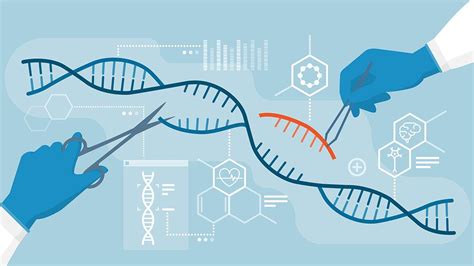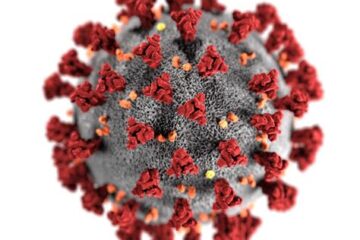
New post at CRISPR @ יואל קסלר .com Hutcherson- Gilford progeria syndrome or progeria is caused by a C-G to T-A mutation and leads to a syndrome of premature aging and early death, usually by age fifteen. There is no known cure. In a recent article in the journal Nature, researchers describe using the CRISPR/Cas9 system with base pair editing to correct this mutation in a mouse model of the disease. mice treated with the gene editing lived more that twice as long as the untreated control ones. The following is an excerpt of an article of an interview with Dr David Liu with of the leading researchers in base pair editing.
"Base editing has only been around for four years. If you had asked me even five years ago if we could use an engineered molecular machine to treat an animal model of Progeria and change a single mutation, I would have said 'Maybe 10 to 20 years from now', says David Liu.
This approach is much more direct than lonafarnib — that's the treatment recently approved by the FDA — which doesn't reverse the mutation but instead tries to undo the damage to the progerin protein. Essentially, it chops off a farnesylated tail that's normally removed by a cleavage site that is itself removed from the Lamin A gene by the progeria mutation. So, the mutation still takes its toll, but lonafarnib seems to reduce the severity of the damage.
Using both lonafarnib and the new ABE therapy in concert, Liu speculates and hopes, may give patients an even better prognosis than either treatment does alone, but it's far too soon to say so with any confidence.
Clinical research on human Progeria patients is still a distant goal, but Liu's ultimate dream is to have the FDA approve the gene-editing therapy — or an improved version of it — as a one-time, postnatal injection.
In general, experts expect gene-editing therapies to work better the earlier in a patient's life they're administered. In the absence of prenatal testing for Progeria, Liu explains that his team's gene-editing therapy will need to be given after the patient is born and diagnosed. But because Progeria is a progressive disease, Liu expects — assuming the gene-editing therapy is proven to be safe and effective — that patients will see substantial benefits even if the treatment were administered late into the course of the disease.
The Progeria patient community is so passionate, and they're quite well-connected. I'm hopeful that if this approach turns into a treatment, people will really know about it. And hopefully, if we can demonstrate that it's safe and efficacious in children, it will join lonafarnib as one of the only two treatments that might be available, Liu says." The full interview can be found here.
The full article in Nature can be found here.
Links to both articles are also available at יואל קסלר crispr .com in the interesting articles page.
פוסט חדש באתר יואל קסלר
Hutcherson- Gilford progeria syndrome או פרוגריה נגרמת על ידי מוטציה C-G ל T-A ומובילה לתסמונת של הזדקנות מוקדמת ומוות מוקדם, בדרך כלל עד גיל חמש עשרה. אין תרופה ידועה. במאמר שפורסם לאחרונה , חוקרים מתארים שימוש במערכת CRISPR/Cas9 עם עריכת זוג בסיסים כדי לתקן מוטציה זו במודל עכבר של המחלה. עכברים שטופלו בעריכת הגנים חיו יותר מפי שניים מהביקורת הלא מטופלת. להלן קטע ממאמר של ראיון עם ד"ר דיוויד ליו עם החוקרים המובילים בעריכת זוג בסיסים.
"עריכה בסיסית קיימת רק ארבע שנים. אם היית שואל אותי אפילו לפני חמש שנים אם נוכל להשתמש במכונה מולקולרית מהונדסת כדי לטפל במודל חיה של פרוגריה ולשנות מוטציה בודדת, הייתי אומר 'אולי בעוד 10 עד 20 שנה', אומר דיוויד ליו.
גישה זו ישירה הרבה יותר מאשר לונפרניב – זה הטיפול שאושר לאחרונה על ידי הפדא בארהב- שאינו מבטל את המוטציה אלא מנסה לבטל את הנזק לחלבון הפרוגרין. בעיקרו של דבר, הוא חותך זנב עם פרנסיל שמוסר בדרך כלל על ידי אתר מחשוף שמוסר בעצמו מהגן Lamin A על ידי מוטציית הפרוגריה. אז, המוטציה עדיין גובה את שלה, אבל נראה שלונפרניב מפחית את חומרת הנזק.
השימוש ב-החדש ביחד, ליו משער ומקווה, עשוי לתת למטופלים פרוגנוזה טובה עוד יותר מאשר כל אחד מהטיפולים לבדו, אבל זה מוקדם מדי לומר זאת בביטחון.
באופן כללי, מומחים מצפים שטיפולים לעריכת גנים יעבדו טוב יותר ככל שיינתן להם מוקדם יותר בחייו של המטופל. בהיעדר בדיקות טרום לידתיות לפרוג'ריה, ליו מסביר שהטיפול בעריכת הגנים של הצוות שלו יצטרך להינתן לאחר לידת המטופל ואובחן. אבל מכיוון שפרוגריה היא מחלה מתקדמת, ליו מצפה – בהנחה שהטיפול בעריכת הגנים הוכח כבטוחה ויעיל – שהחולים יראו יתרונות משמעותיים גם אם הטיפול יינתן בשלב מאוחר של מהלך המחלה.
קהילת חולי פרוגריה כל כך נלהבת, והם די מקושרים היטב. אני מקווה שאם הגישה הזו תהפוך לטיפול, אנשים באמת יידעו על זה. ובתקווה, אם נוכל להוכיח שזה בטוח ויעיל בילדים, זה יצטרף ל-lonafarnib כאחד משני הטיפולים היחידים שעשויים להיות זמינים, אומר ליו. את הראיון המלא ניתן למצוא כאן.
את המאמר המלא ב-Nature ניתן למצוא כאן.
קישורים לשני המאמרים זמינים גם באתר יואל קסלר .com בעמוד המאמרים המעניינים.


